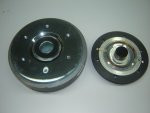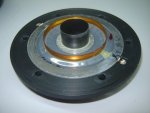Re: High Frequency Compression Driver Evaluation
Yep, I agree. I do too. One of the problems of the switch to digital perceptual compression schemes has been allowing users to choose datarates. Unlike analog systems like FM radio or NTSC TV where the quality or "datarate" is fixed; ignoring interference and fading with distance. And even for a given compression scheme (MP3, MPEG2-AAC...) there are better and worse encoders. Encoder tuning takes a lot of time - multiple listening tests on critical test pieces for all allowable datarates.
That's interesting. One of my biggest complaints about a lot of audio codecs is how much distortion in the higher frequencies I actually do hear. Granted it has much improved over the original mp3 format. But I do hear it even with AAC at the lower to mid bit rates. I suppose many folks don't notice it but I do, namely on cymbals and high hats. That phasey-swishy sound. Nowadays I use lossless AAC when encoding my own stuff. If you buy from the iTunes store, you're stuck with 256k AAC which is adequate for a lot of stuff but not always. It depends on the musical content as far as how bad the artifacts are.
Yep, I agree. I do too. One of the problems of the switch to digital perceptual compression schemes has been allowing users to choose datarates. Unlike analog systems like FM radio or NTSC TV where the quality or "datarate" is fixed; ignoring interference and fading with distance. And even for a given compression scheme (MP3, MPEG2-AAC...) there are better and worse encoders. Encoder tuning takes a lot of time - multiple listening tests on critical test pieces for all allowable datarates.


